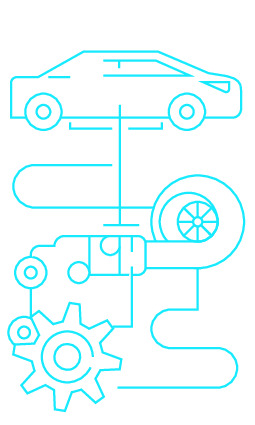|
|
|
| Module code: FT22 |
|
|
2V+1U+1P (4 hours per week) |
|
6 |
| Semester: 4 |
| Mandatory course: yes |
Language of instruction:
German |
Assessment:
Written exam (90 min.)
[updated 22.05.2023]
|
FT22 (P242-0039, P242-0099) Automotive Engineering, Bachelor, ASPO 01.10.2011
, semester 4, mandatory course
FT22 (P242-0039, P242-0099) Automotive Engineering, Bachelor, ASPO 01.10.2015
, semester 4, mandatory course
FT22 (P242-0039, P242-0099) Automotive Engineering, Bachelor, ASPO 01.04.2016
, semester 4, mandatory course
FT22 (P242-0039, P242-0099) Automotive Engineering, Bachelor, ASPO 01.10.2019
, semester 4, mandatory course
|
60 class hours (= 45 clock hours) over a 15-week period.
The total student study time is 180 hours (equivalent to 6 ECTS credits).
There are therefore 135 hours available for class preparation and follow-up work and exam preparation.
|
Recommended prerequisites (modules):
FT01 Engineering Mathematics I
FT04
FT05 Engineering Mathematics II
FT09
FT15 Engineering Mathematics III
FT16
FT17 Automotive Engineering I
[updated 16.12.2013]
|
Recommended as prerequisite for:
FT25
FT26
FT27 Vehicle Testing
FT29 Compulsory Elective
FT30 Engineering Project in English
FT32 Bachelor Thesis
FT51 Basic Principles of Accident Analysis
FT53 Car Transmission Systems
FT54 Basics of Brake Technology
FT57 Fundamentals of Motorcycle Engineering
[updated 14.02.2025]
|
Module coordinator:
Prof. Dr.-Ing. Rüdiger Tiemann |
Lecturer: Prof. Dr.-Ing. Rüdiger Tiemann
[updated 23.05.2011]
|
Learning outcomes:
After successfully completing this module, students will be familiar with the function, design, calculation and layout of vehicle systems for lateral and vertical dynamics (chassis, steering and braking systems) and their interaction in the overall vehicle based on the current state of the art.
This also includes the different model assumptions for vehicle dynamics.
Students will be able to:
- understand the technical-physical relationships inherent in the way that vehicle systems function and the consequences for lateral and vertical dynamics.
- deal with questions regarding technical changes to vehicle systems
- implement solutions in practice.
[updated 22.05.2023]
|
Module content:
Chassis and steering systems: Motion behavior of vehicles, unicycle model, tire behavior, single-track model, non-linear sprung and damped four-wheeler model, self-steering behavior, lateral and vertical dynamics, wheel suspension, steering systems, suspension and damping, kinematics and elastokinematics, driving comfort, driving dynamics control systems. Computing different driving maneuvers with regard to side slip and yaw angles. Tire characteristics and force transmission behavior for lateral and vertical dynamics.
[updated 22.05.2023]
|
Teaching methods/Media:
Lecture with exercises, integrated simulations and laboratory experiments. Lecture notes and comprehensive literature with all diagrams. Various simulation software tools (Excel, Carmaker) for students to perform their own simulation calculations with model variants; exercises for lectures, exam examples.
[updated 22.05.2023]
|
Recommended or required reading:
# Bosch (Hrsg.): Kraftfahrzeugtechnisches Taschenbuch; Dietsche, Reif, Springer Vieweg, 2018
# Braess, Hans-Hermann(Hrsg.): Handbuch Kraftfahrzeugtechnik, Springer Vieweg, 2013
# Jörnsen Reimpell / Jürgen Betzler: Fahrwerktechnik; Grundlagen, Vogel-Verlag, 2005
# Jörnsen Reimpell: Fahrwerktechnik; Radaufhängungen
# Jörnsen Reimpell: Fahrwerktechnik: Reifen
# Breuer/Bill: Bremsenhandbuch, Springer Vieweg, 2017
# Zürl, Karl-Heinz: Modern English for the Automotive Industry, Carl Hanser Verlag, 2005
# Automobiltechnische Zeitschrift (ATZ)
[updated 22.05.2023]
|


